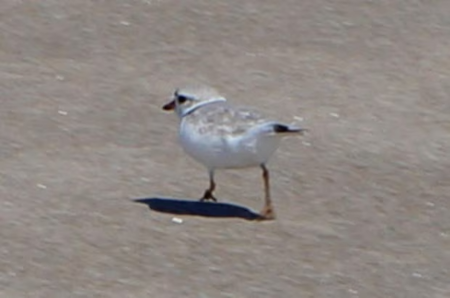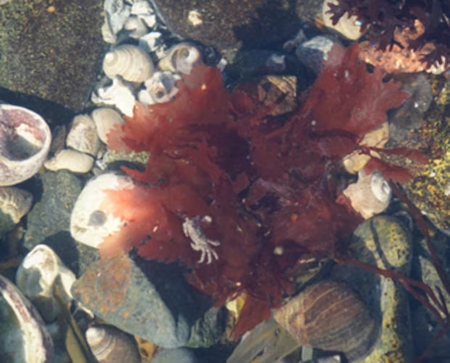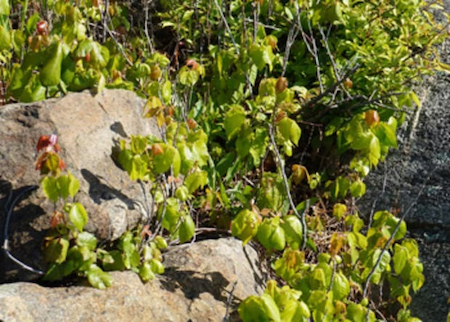Many plants and animals make the coastline of Massachusetts their home. For animals, the shoreline may provide a place to rest, nest, feed, or reproduce. For plants and seaweeds, the beach or nearshore area affords a place to root, shoot, spread, and replicate. With the wealth of species out there, identification can be a challenge. But wouldn’t it be nice to name that seabird, or maybe even finally be able to identify (and avoid) that pesky poison ivy? Below are a few links to help you identify some of the more common animals and plants at the shore.
CZM also provides a range of resources for identifying invasive species along the coast. See the Marine Invasive Species Program.
Birds, Seals, Turtles, and Other Vertebrates (i.e., animals with backbones)
- CZ-Tip - Birdwatching on the Coast - This Massachusetts Office of Coastal Zone Management (CZM) tip explores the variety of threatened and endangered birds that visit the Massachusetts coast and the best places to go to spot the most birdlife along the shore.
- CZ-Tip - Sharing Coastal Waters with Sea Turtles - This tip covers the sea turtles that frequent Massachusetts ocean waters and what you can do to protect them (including what to do if you find one stranded at the beach).
- CZ-Tip - Massachusetts Most Intriguing Marine Creatures - From the ugliest to the most dramatic, this page explores some weird and wonderful sea creatures in Massachusetts.
- Birds of North America - This website guides you through the identification of any species of bird found in North America, including shorebirds and seabirds.
- ESA Threatened and Endangered Species Directory - This National Oceanic and Atmospheric Administration (NOAA) Fisheries website offers links with information and photographs to over 100 endangered and threatened marine species in the New England/Mid-Atlantic region, including protected fish, seabirds, sea turtles, and marine mammals.
- Cape Cod National Seashore Animals - This website includes information and descriptions of animals that occupy the Cape Cod National Seashore, including amphibians, birds, mammals, reptiles, and marine invertebrates.
Shellfish (and Seashells), Sea Stars, and Other Invertebrates
- Shellfish at the Shore (PDF, 5 MB) - This Massachusetts Division of Marine Fisheries poster provides photographs and descriptions of common shellfish found on Massachusetts shores.
- Cape Cod Beachcombing: A Dozen Sea Shells You Will Surely Find - This article from VisitorFun describes the shells that you are likely to find while exploring beaches on Cape Cod.
- Seashells from the Ocean's Edge - This web page from SeashellGuide.com provides photographs and descriptions of shells and other marine life that are commonly found along the Atlantic shore.
- CZ-Tip - Learn What Lurks in a Massachusetts Tide Pool - See this tip to learn more about strange marine organisms and the creative characteristics that allow them to survive this harsh intertidal environment, along with a guide to destinations where you can make your own tide pool discoveries.
Plants and Seaweeds
- CZ-Tip - Coastal Plant Identification: Common Native and Invasive Species Found on the Massachusetts Coast - To help you identify the plants on the Bay State’s coast, and sort the native species from those that originated in other areas, this tip provides descriptions and photographs of some of the more common coastal plants in Massachusetts.
- Coastal Landscaping - Plant Highlights and Images - This CZM web page links to photographs and descriptions of native coastal plants found in Massachusetts, organized in to these categories: grasses and perennials, shrubs and groundcovers, and trees.
- Non-Native Seaweed in Massachusetts (PDF, 2 MB) - To learn about invasive seaweed species in Massachusetts, this CZM fact sheet provides a description of the species, their ecology, and potential impacts to the marine ecosystem and economy.
- Eelgrass in Buzzards Bay - This Buzzards Bay National Estuary Program website describes the biology, distribution, and threats to eelgrass populations.
- Poison Ivy, Poison Oak, Poison Sumac - This website provides detailed descriptions and photos of poison ivy, oak, and sumac and the skin rashes they cause.
- Cape Cod National Seashore Plants - This website includes information and descriptions of plants that occupy the Cape Cod National Seashore, including marine plants/algae and coastal heathlands, as well as a description of their vegetation mapping project.


